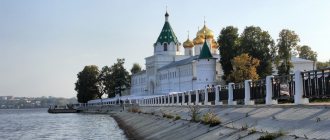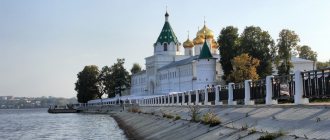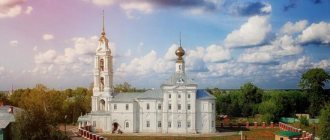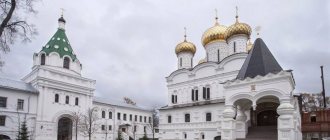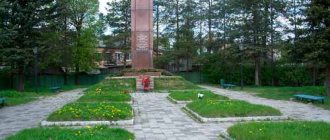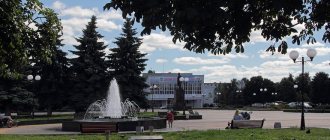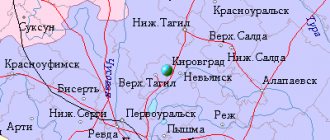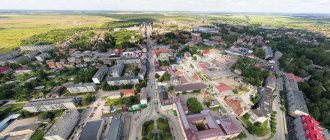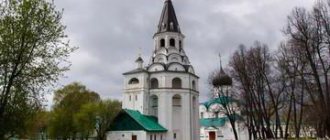| NEWS SCHEDULE OF SERVICES ANNOUNCEMENTS HISTORY OF THE TEMPLE ST. NICHOLAS - prayers - lives LOCAL SAINTS - Barnabas of Vetluzh - Macarius of Zheltovodsk - Bishop Neophyte THEOLOGY COURSES - lists of students - student works - literature PARISH ELECTRONIC LIBRARY PALOM NIC TRIPS Notes of a Pilgrim PHOTO GALLERY VIDEO | Photo galleryExterior of the TempleChristmas 2011Easter 2011Varnavin readings 04/18/2012Battle of Kulikovo 10/20/2013Community behind the rosehip... 2013Star of Bethlehem 01/31/2014Palm Sunday 2014Removal of the Shroud 2014Holy Saturday 2014Easter 2014Trip to the village of Odoevskoye 06/01/2014Pentecost 06/08/2014Trip of the Sunday School parent committee to the village of Troitskoye July 20, 2014 |
- Home
- About Sharya
Founded 1906
| Flag | Coat of arms |
| A country | Russia |
| Subject of the federation | Kostroma region |
| Urban district | Sharya city |
| Coordinates | 58°22′00″ n. latitude 45°30′00″ e. d. Coordinates: 58°22′00″ N. w. 45°30′00″ E. d. |
| Head of the city district | Tsaritsyn Ivan Yurievich |
| Based | 1906 |
| City with | 1938 |
| Square | 25.3 km² |
| Center height | 110 m |
| Population | ↗23,866[1] people (2015) |
| Names of residents | Shar'inets, Shar'inka, Shar'in's people |
| Timezone | UTC+3 |
| Telephone code | +7 49449 |
| Postcode | 157500 |
| Vehicle code | 44 |
| OKATO code | 34 430 |
| OKTMO code | 34 730 000 001 |
| Official site | adm-sharya.ru |
Sharya
| Year of foundation: | 1906 |
| Population: | 23.7 thousand people |
| Residents: | Sharya residents |
| Timezone: | UTC+3 |
| Time: | Moscow |
| Telephone code: | +7 49449 |
| Telephone information: | (49449) 2-39-38 |
| Postcode: | 157500 |
The city is located on the left low bank of the Vetluga River. The city of Sharya owes its foundation and development to the railway laid here at the beginning of the last century. The construction of the Vyatka-Vologda railway was carried out by the construction department using funds from the state treasury. Construction of the road and the Sharya locomotive depot began in 1903, and in June 1906, a section of the road was put into operation. At the beginning of 1907, work on the construction of a locomotive depot was completed. In the same year, the construction of the station, water pumping station, 21st railway school, hospital with clinic and residential buildings along Vokzalnaya St. was completed. Sharya. During construction, the labor of peasants was mercilessly exploited. On the site of the current warehouses of the inter-district base, a cemetery arose, popularly called the Tatar cemetery, where construction workers who died from overwork and unsanitary living conditions were buried.
Today Sharya is a developed industrial city. The names of many famous cultural and artistic figures are associated with the city. Melnikov-Pechersky and Nemirovich-Danchenko wrote about Vetluga; the story “The River Plays” was written by the writer Korolenko. M. Bazankov, A. Belyaev, O. Khomyakov were born and worked here.
Since 1991, 4 Orthodox churches have been opened in Sharya. Until 1991, the building of the St. Nicholas Church in the city center was used as a local history museum. On June 25, 1991, the building of the St. Nicholas Church was returned to the church community. In January 1998, St. Nicholas Church burned down and was rebuilt a few years later. Now there are three churches in the city. The revived wooden church of St. Nicholas became the center of the Sharya deanery. At the Alekseevsky Church there is a military-patriotic club in honor of Theodore Stratilates. Among cultural institutions, the Sharya Local History Museum occupies a special place. Local attractions also include the Lagunin estate (a park and a pond have been preserved) in the village of Rozhdestvenskoye and the spring of St. Barnabas in the village of Ivanovskoye.
Source
nord_ursus
Notes from a Northern Bear
Cogito ergo sum
It’s more than three hundred kilometers away from its regional center, Kostroma. The Vyatka land - the Kirov region - begins nearby. There are dense forests around and the constant roar of trains on the northern track of the Trans-Siberian around the clock. Shari city
appeared in the 20th century precisely thanks to the railway and timber industry, receiving city status in 1938. Now it is the second largest city in the Kostroma region (36 thousand inhabitants, if you count the agglomeration of villages, and 24 thousand, if only the city), looking, in a way, the “geographical antipode” of Kostroma. Now let's take a closer look at what the city in the east of the region is like.
2. Let’s start from the station - it’s not for nothing that the city was born by the railway. Sharya, unfortunately, is one of those cities where the first impression after arrival is spoiled by a shabby station and a broken station square. The station itself, by the way, is pre-revolutionary, built in 1906, standard on this line (I showed the same one, for example, at the Nikolo-Poloma station, and there it is in much better condition).
The interior is quite authentic, apparently having changed little since the 1980s - just the way I like it. At the ticket office I bought a ticket to Kotelnich on the Moscow-Abakan train, paying attention to the distinct dialect of the cashier: “Your seat is in the lower thirty-fifth,” - although the region is still Kostroma, the dialect is already typically Vyatka.
See also: Cultural and historical sights of Italy
3. This is what the station looks like from the tracks. True, this time the filming from the pedestrian bridge was prevented by the valiant VOKHR members, who thereby protected the top-secret strategic facility from sabotage
